In a shaky, wooden house in South Okkalapa, a neighborhood in Northern Yangon, Ko Lu Maw is crouched over a tiny table by his bed, working quietly and meticulously at something small that’s situated between his hands. He is wearing a magnifying glass to see the minuscule details on a watch face, carefully stamping Burmese numbers on to its surface.

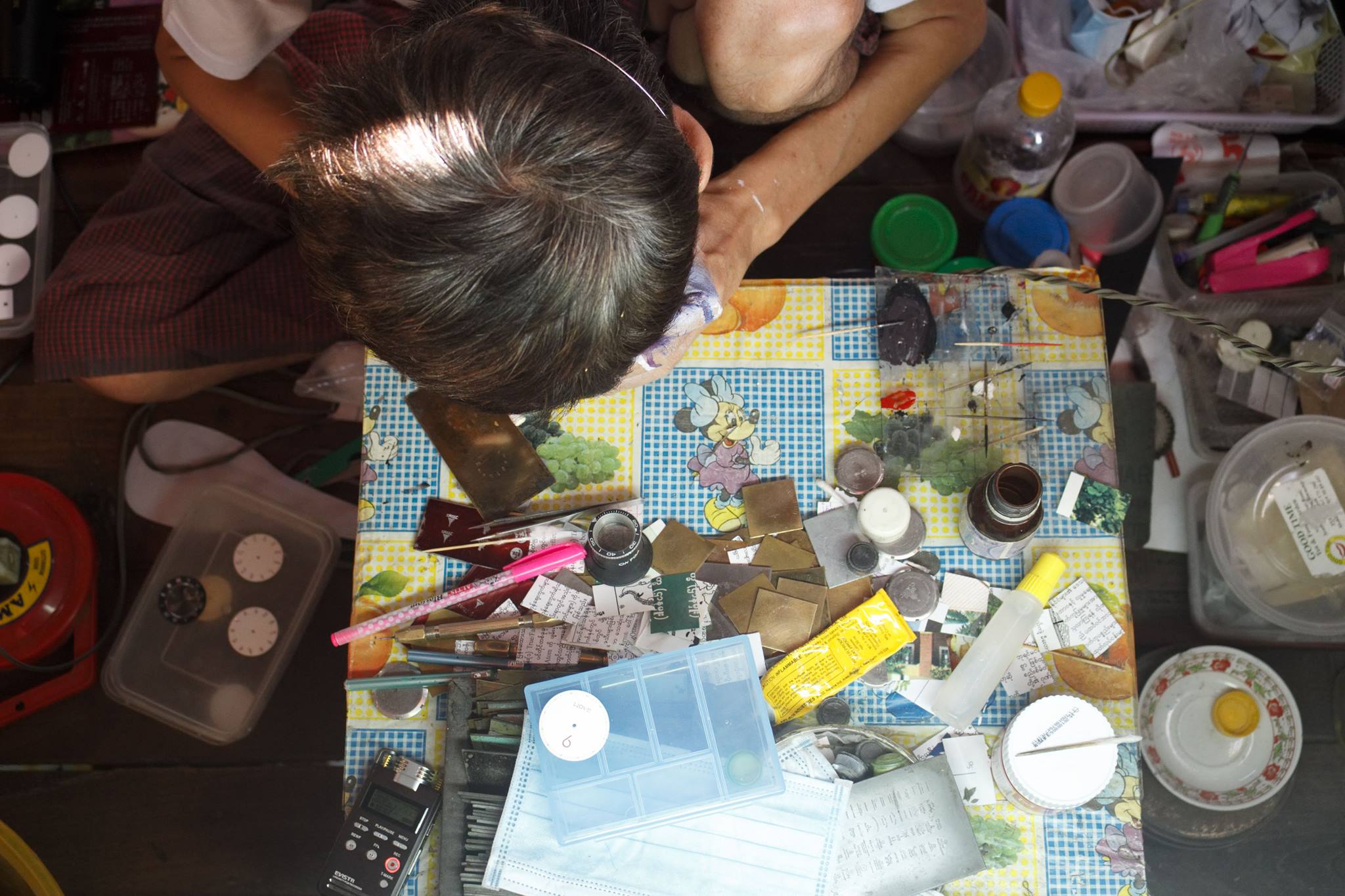
The process looks complicated, and even at times inscrutable to this writer’s untrained eye, but Lu Maw insists that anyone can learn how to make a timepiece, given the right amount of time and effort into learning the craft.
“The work isn’t difficult, but you must be patient and practice,” he said, moving on to the next number on the dial.
Across town, in downtown Yangon’s Sule Pagoda, another man — this one, named Ko Kyaw Oo — is also wearing a magnifying glass, working with a similarly intense focus on a wristwatch within his cramped workspace. He’s surrounded by dozens of disassembled watches, and small watch parts are scattered all around him.


The two watchmakers are business partners who have been working together for over two decades. Late last year, the duo teamed up with Yangon-based British national Charlie Artingstoll to co-found Burma Watches, a local company that specializes in assembling custom-made watches with Burmese numerals and custom logos. Every timepiece is hand-crafted by Maw and Oo, who give their customers the option to make their watches fully customizable, down to the type and design of the numbers.
Artingstoll, who is also the founder of Full Stop, an event-planning company turned record-label, handles marketing and business development, met the two watch-makers when he was trying to get a watch with Burmese numericals made for himself.
“I met them two years ago by accident – someone from one of the watch shops said she heard from a friend that there was a guy who had a shop near Sule Pagoda that knew where to get a Burmese watch, so I literally went to every single shop around Sule until I met them,” he told Coconuts Yangon.
A fading craft
Although there was once a thriving scene of watchmakers during the Yangon of the 1960s and the 1970s, Maw and Oo are now part of the “last generation” of old-school watchmakers in the city. The craft largely lost relevance in the 21st century due to an influx of cheap watches produced in China, followed by the popularity and prevalence of smartphones.
Burma Watches, however, has been making waves across Burmese social media for being one of the few companies in Myanmar providing watches with traditional Burmese numbers on the dial. The trio is especially proud of a custom order that they recently fulfilled for a customer from Shan State, which resulted in Maw and Oo producing — according to them — the only watch in the world that has Shan numerals.
Recently, we asked Maw, Oo, and Artingstoll to walk us through their process of producing watches, and the trio offered to create a custom-made watch for Coconuts Yangon, with our green Coco-conversation bubble logo, and Burmese numbers on the dial.
Here’s how it works for someone who wants to commission Burma Watches to create their own watch. It takes a bit of time, as well as several pit stops around the city, to complete the process.
First, a quick note. Since no one in Myanmar currently manufactures the nuts and bolts that are encased within the body of a watch, Maw and Oo collect old timepieces and repurpose their parts to produce each “new” piece. Therefore, they aren’t really watchmakers in the traditional and technical sense of the word — but apparently, most watches nowadays are created using commercially made parts (rather than painstakingly made all by the same person), so it’s not an unusual practice.
So, on to the first step in getting a customized watch. We went to a printmaking shop downtown, one that specializes in printing wedding invitations, graduation announcements, and business opening invitations. The shop employs an “intaglio process,” which creates a relief on a metal plate, which will then be used to print the custom Coconuts Yangon logo on the watch face.
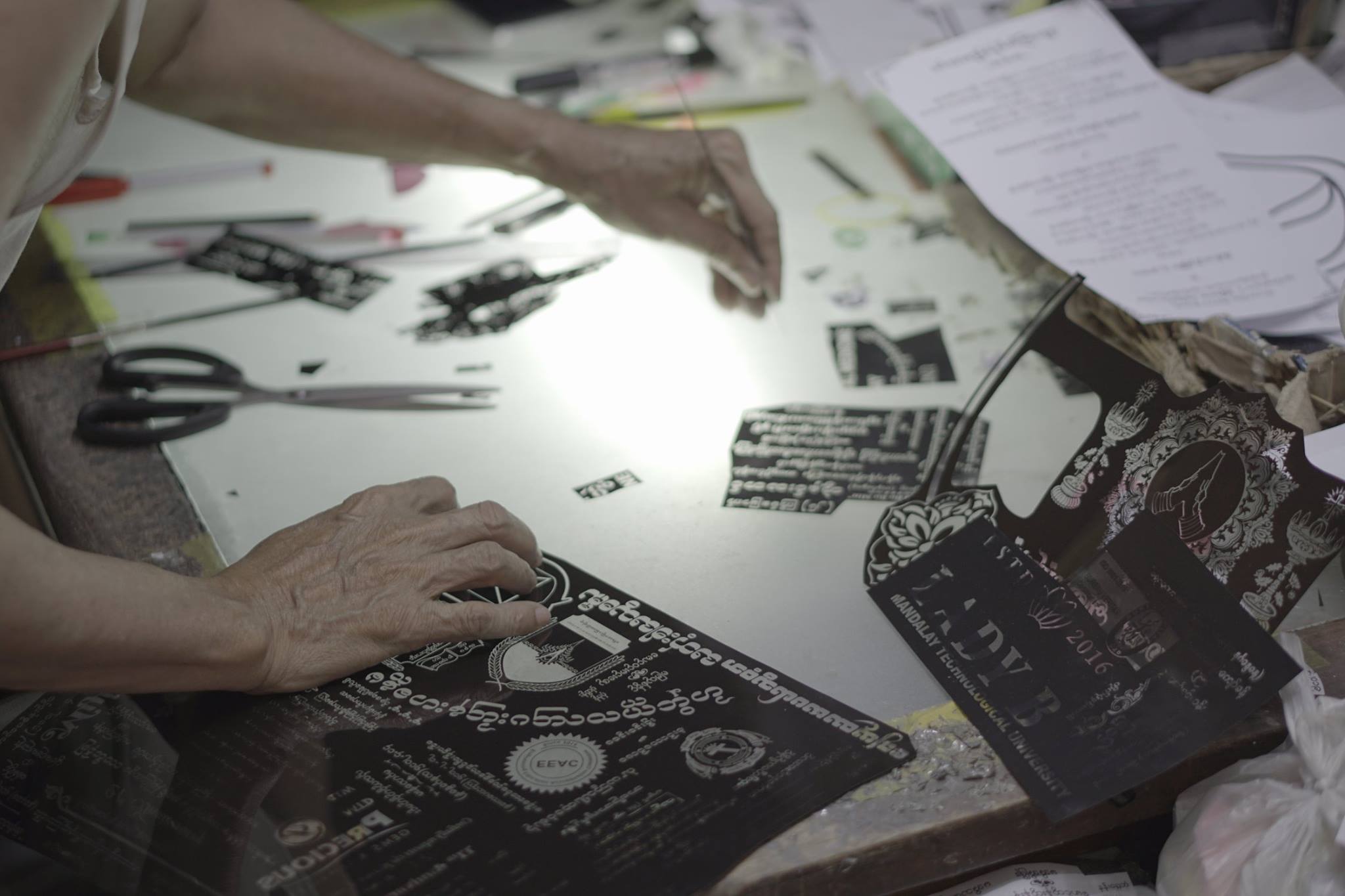

This process takes about 30 to 40 minutes. First, the pattern is etched on to the plate, after which a protective layer of sediment is applied, then baked, to protect the metal plate from an acid bath. That acid bath is required to create negative space, which helps hold the ink in place during the printmaking process.
After we obtained our customized Coconuts Yangon plate, we made our way to Sule Pagoda to see Ko Kyaw Oo, who disassembled another wristwatch so that we could take the watch face on it over to Ko Lu Maw in South Okkalapa. Here is where we would complete the central piece of this puzzle.

Burmese numbers, one at a time
Why don’t the two watchmakers work in the same studio? According to Maw, he works from home due to his poor health. He thinks that all the years of working so closely with paints and alcohol resulted in constant exposure to fumes that have negatively affected his respiratory system.
Maw also confessed that years of smoking cigarettes further exacerbated his health: “I used to smoke two packs a day. I don’t think that helped at all,” he said, matter-of-factly.
Back once again in Maw’s bedroom, we watched as he carefully painted each Burmese number on to our custom-made metal plate. After that, he printed each number on to the watch-face with absolute precision.
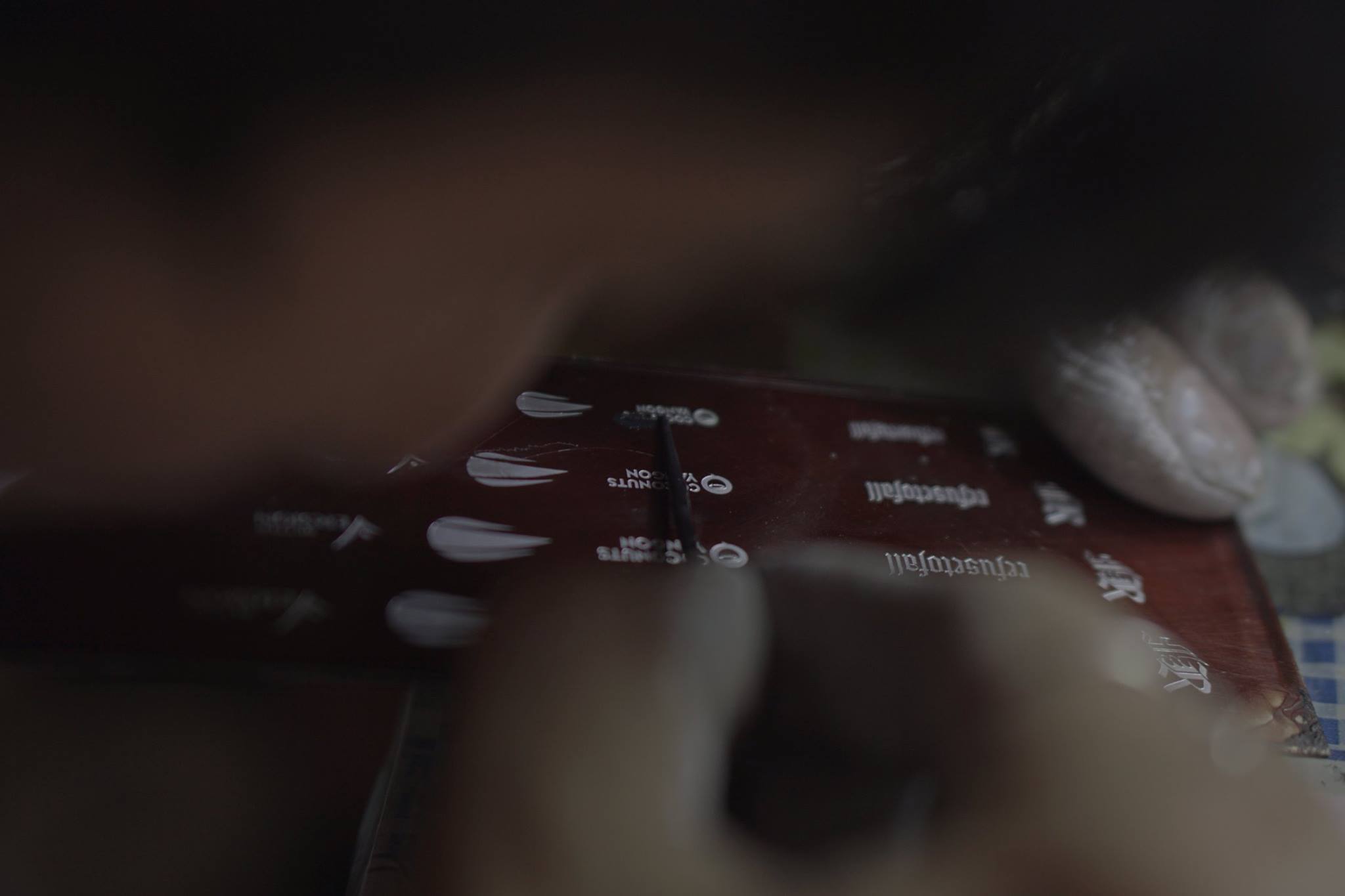

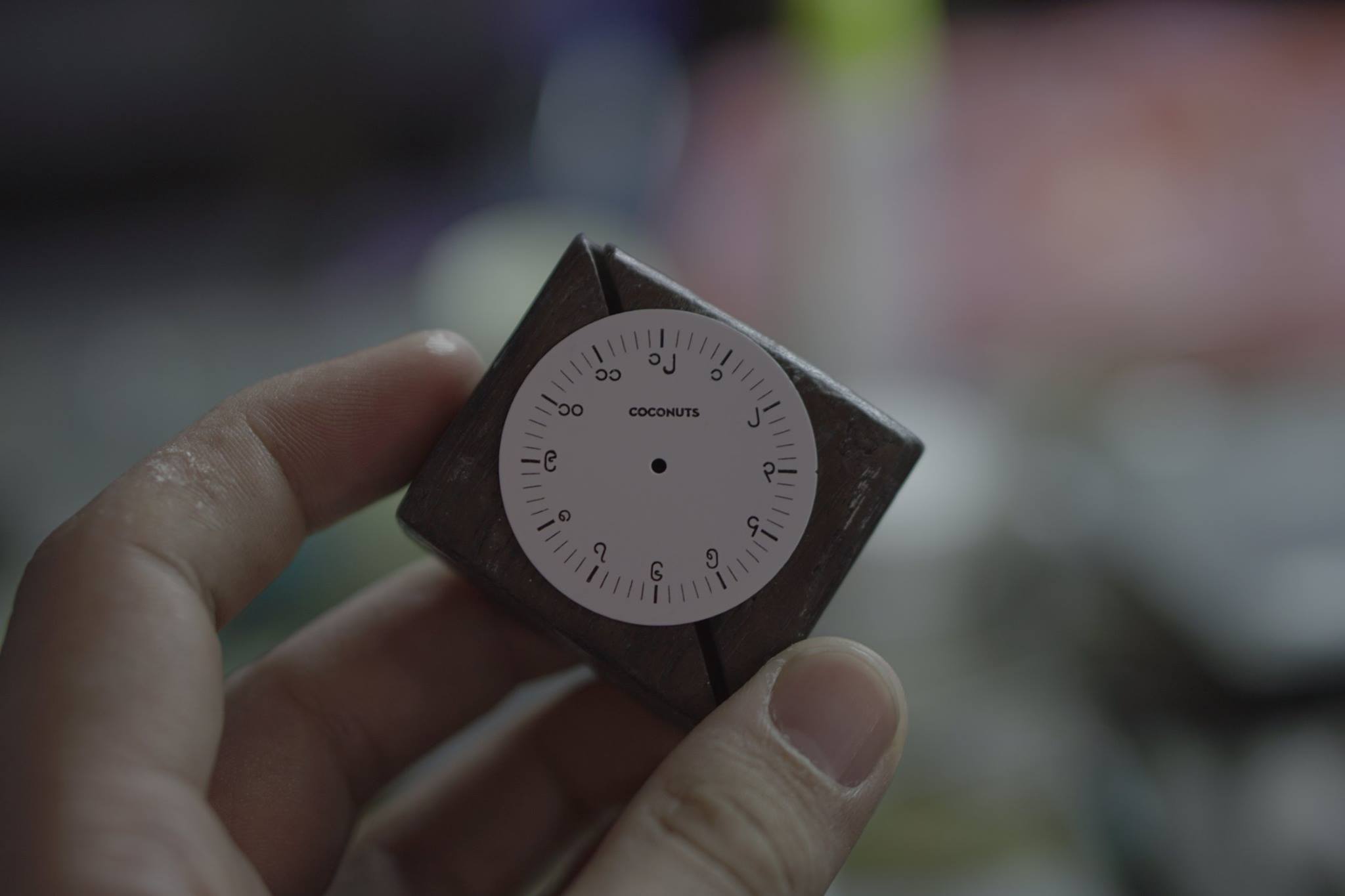
As he worked, we asked Maw about the possibility of his training an apprentice. At first, he was silent. After some thought, he answered that he didn’t know any young people who wanted to learn his craft, but on top of that, he wasn’t particularly concerned about the potential loss of knowledge that would result from his retirement from watchmaking.
“If I stop doing it, someone else can figure it out. I don’t want to teach it to my nephew; I want him to go to school,” he said.


Shortly after Maw completed the watch face, we made our way to Ko Kyaw Oo’s residence in Tarmwe township to meet up with him for a chat, and to pass him the watch face so that we could, at last, complete the timepiece.
From a quiet alley, his family greeted us, then welcomed us into their living room, which had three clocks and Islamic art on prominent display. Oo took the watch face from us, as quickly went to work, reassembling the watch carefully. Next to him was a cabinet filled with watches that were awaiting complete assembly, for customers of Burma Watches.
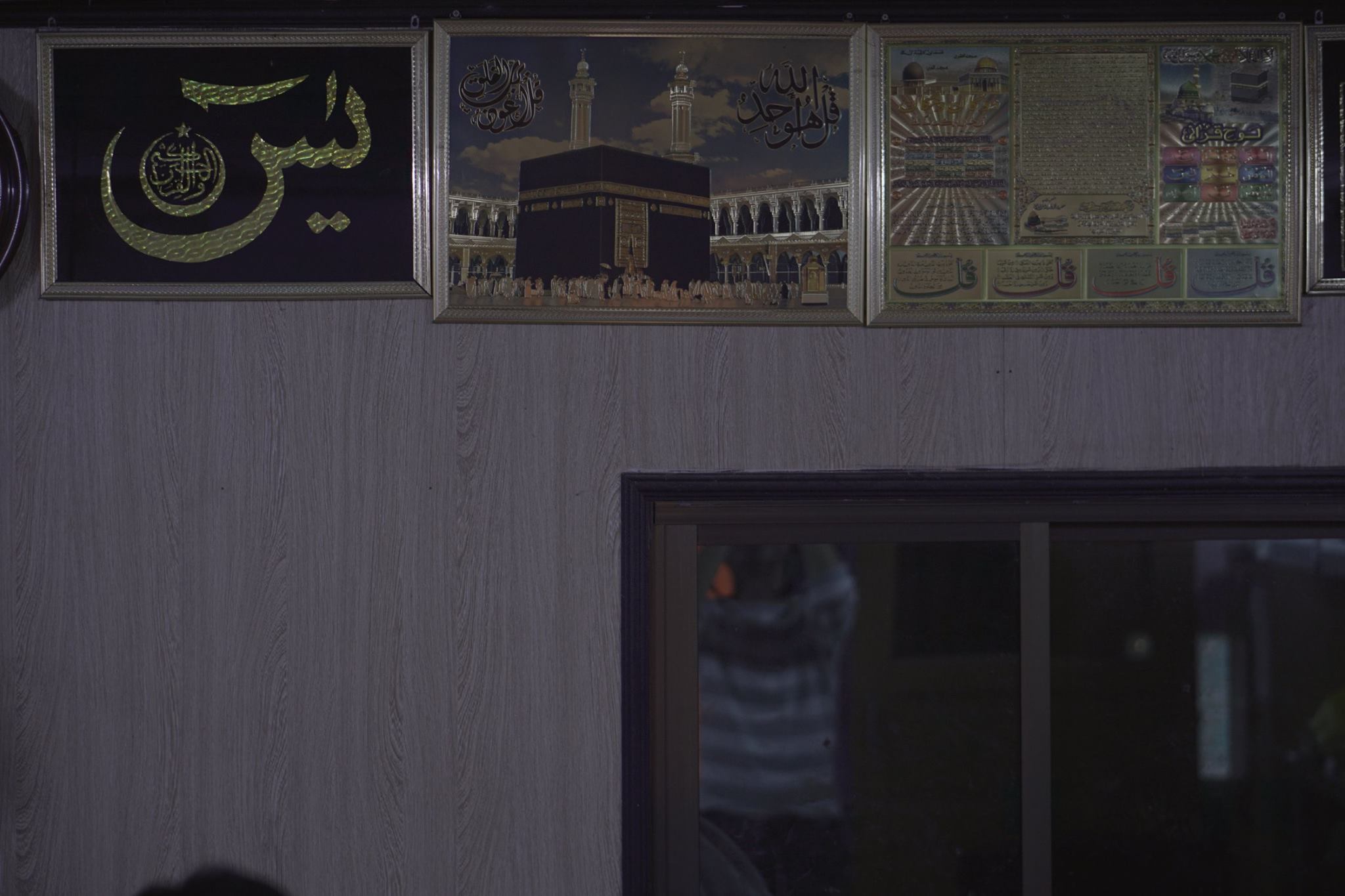

“I began fixing watches because I was fascinated with machines. I learned by observing and hanging around the watch shops downtown. While it doesn’t make you rich, it makes me happy to be doing something I am interested in,” Kyaw Oo said, hunched over, magnifying glass on his right eye, fingers moving swiftly.

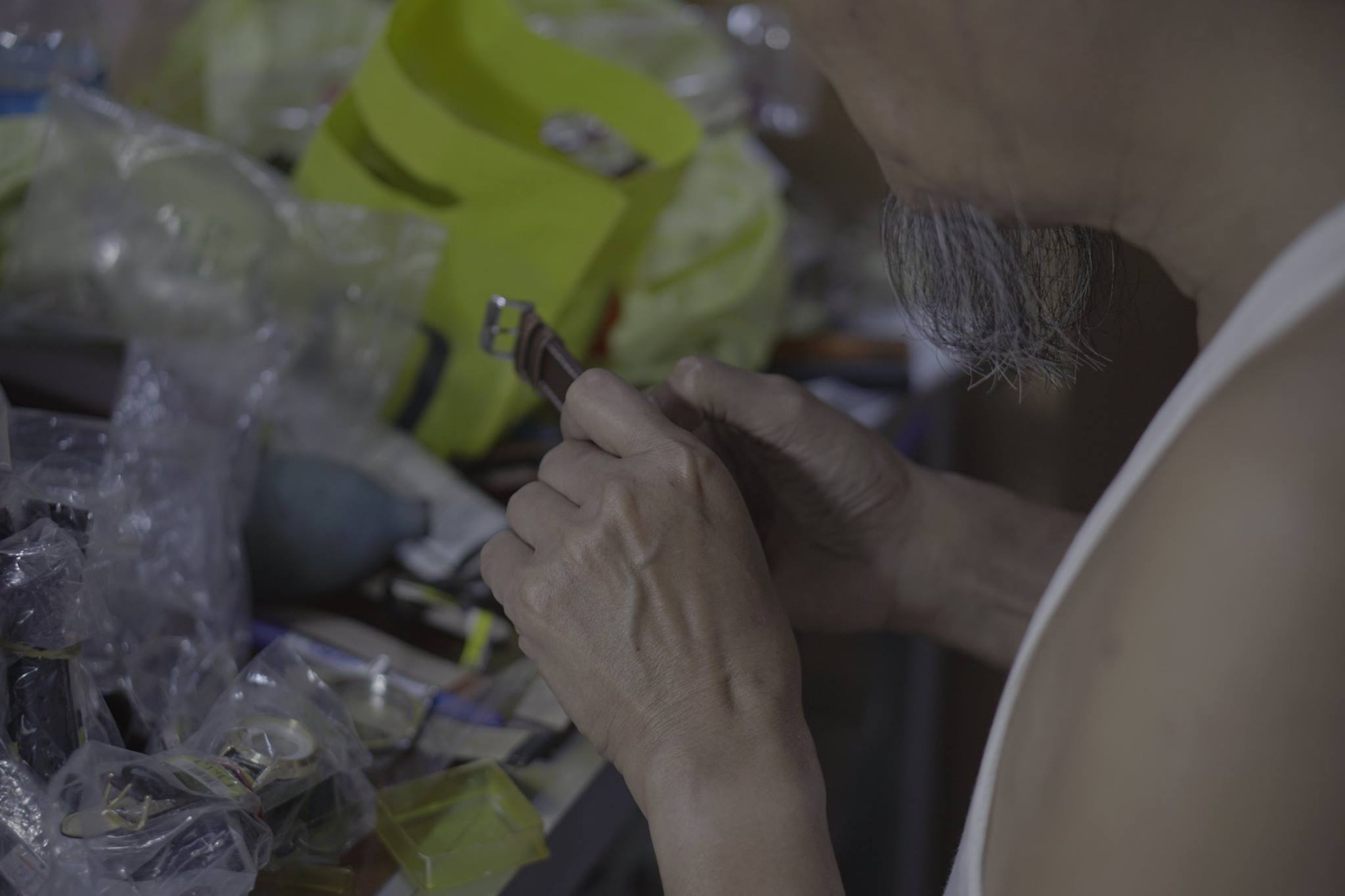
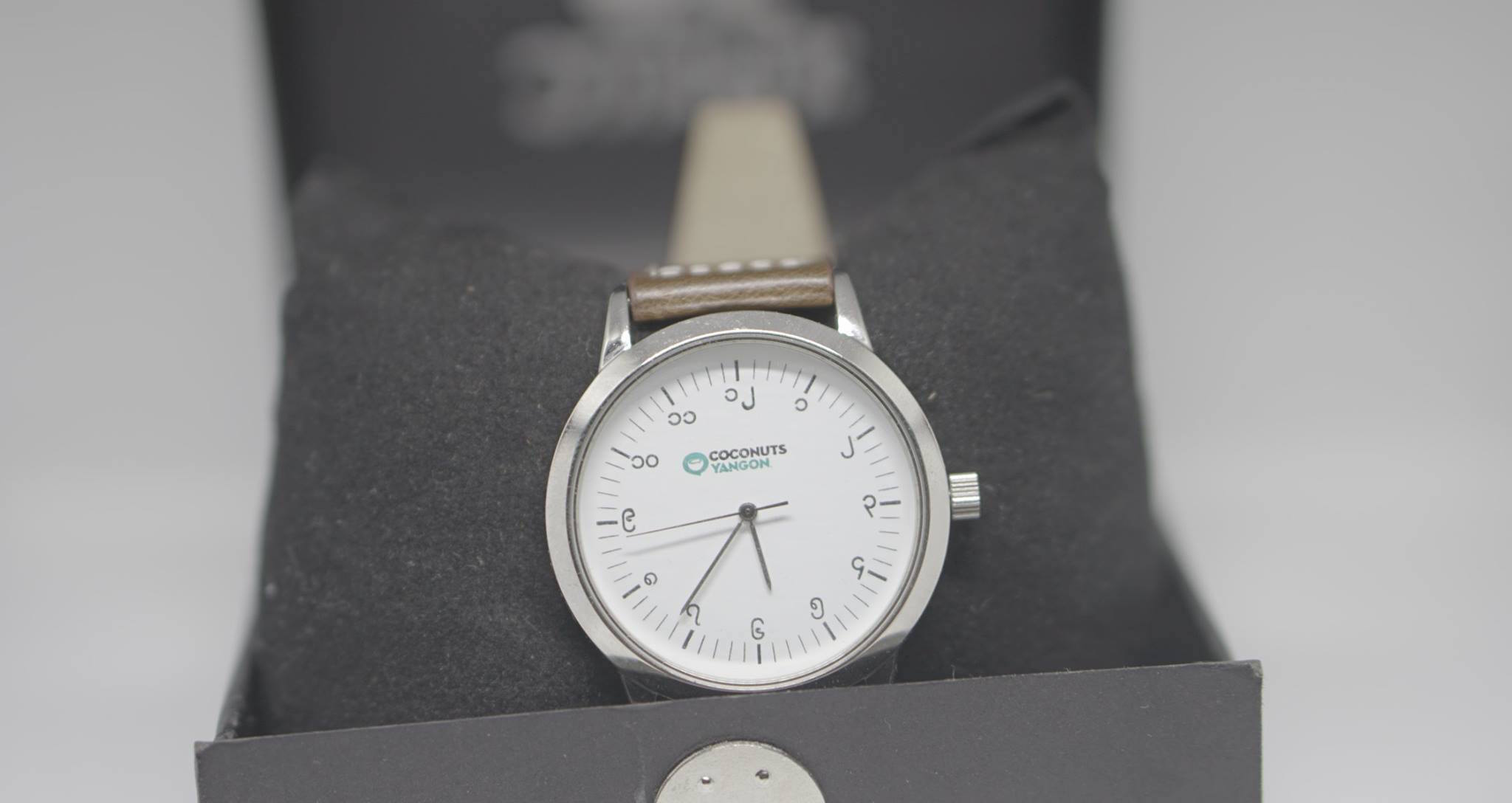
After tinkering for five minutes, the dial began ticking, and the watch came to life.
FIND IT:
Burma Watches’ customized timepieces are available through the company’s Facebook page. The cost of each watch ranges between US $70-120, depending on the level of customization. Currently, they only do wristwatches.



Reader Interactions